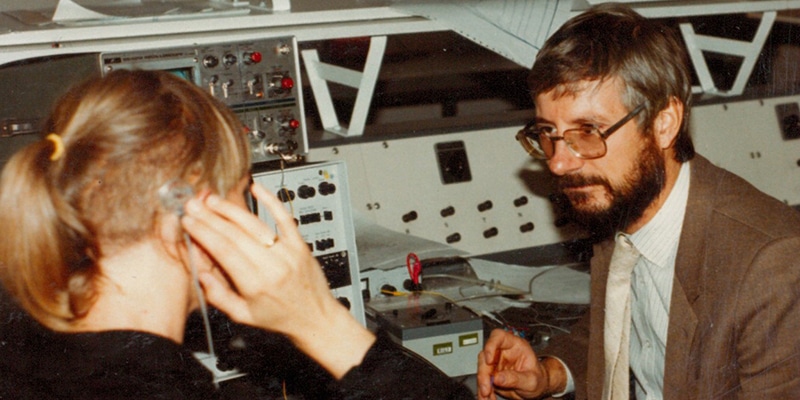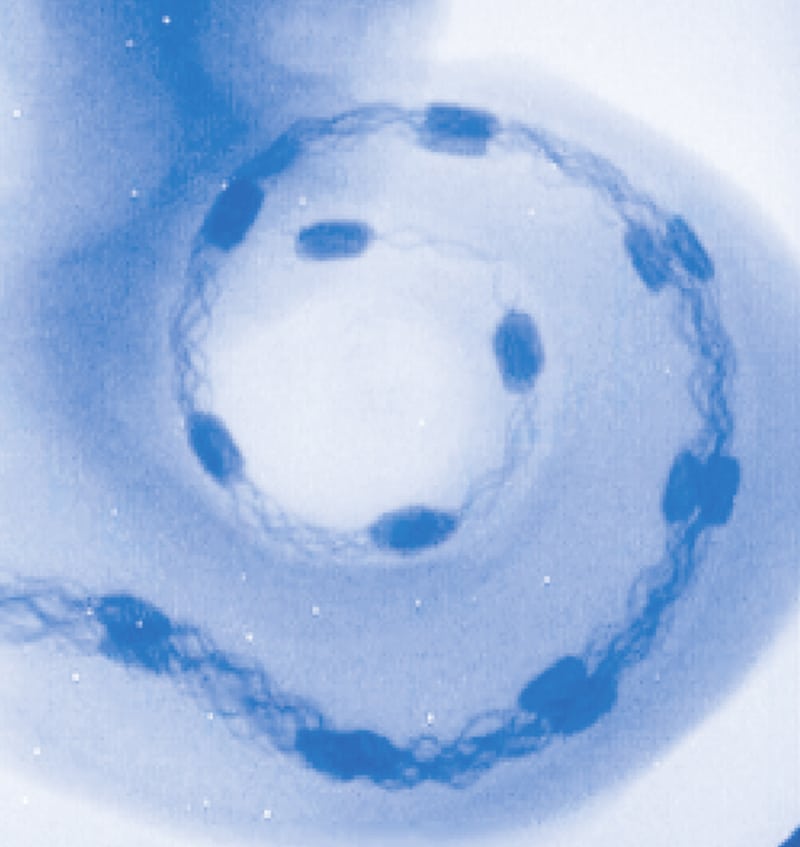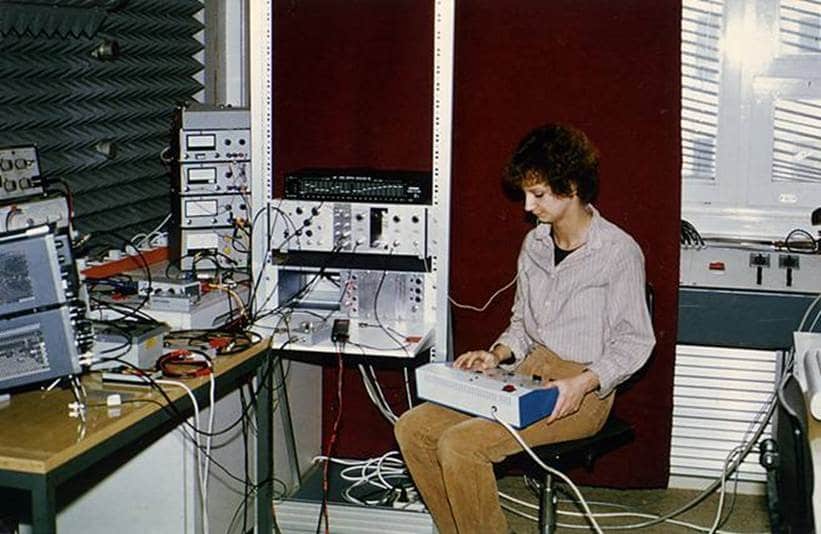
MED-EL
Published Jun 02, 2021 | Feb 12, 2025
The Early History of Cochlear Implants and MED-EL
Hundreds of thousands of people around the world can hear thanks to our implants. But getting here was a long journey. It goes back almost 50 years to when MED-EL CEO Ingeborg Hochmair and her husband Erwin pioneered the modern multichannel cochlear implant. Let’s step back in time and take a closer look at how it all began.

The Start of Cochlear Implant Development
In 1975, Ingeborg and her future husband Erwin Hochmair were studying cochlear implant development at the Technical University of Vienna. At the time, there was a lot of skepticism about whether or not it was even possible for a cochlear implant to help treat deafness. But the Hochmairs knew what they wanted to accomplish.

Our very optimistic goal was to design an electronic implant that would enable the user not only to hear sounds but also to provide the ability to understand some speech.
Ingeborg Hochmair
CEO of MED-EL
A big step towards this goal was made in 1977: On December 16, 1977, a cochlear implant designed by the Hochmairs was surgically implanted at the University Clinic in Vienna by Prof. Kurt Burian.
Groundbreaking Hearing Technology
Just like modern cochlear implants, the first cochlear implant had two primary parts: an external processor that turned sound into electrical signals and an internal implant that sent information to the brain. The implant itself had two sections: a computer that received information from the external processor and an electrode array that is put into the ear.
There were some very special aspects of the design of the Hochmairs’ first cochlear implant:
Its computer chip worked with a long electrode array that provided electrical stimulation to many different parts of the cochlea. This was done because early research showed that where the stimulation happened would change the perceived pitch of the sound, just like what happens on a piano: press keys that are far apart and they will sound very different.

The electrode array also used a special design pioneered by the Hochmairs: wave-shaped wires. These wires were inside the electrode array and allowed the electrode array to be really flexible so it could softly fit inside the cochlea, which is about the size of a pea. These special wires also help to provide structure preservation, which means not damaging the delicate nerves inside the cochlea.
This first cochlear implant, like all others at the time, helped the recipients hear sound, but understanding speech was still difficult and, at the very least, required the recipient to watch the speaker and lip-read closely.
Understanding Speech With a Cochlear Implant
One of the most famous early recipients of a Hochmair cochlear implant is Connie, as she was known in scientific journals.

Connie worked closely with Ingeborg in these early years. She received a Hochmair cochlear implant in 1979 and was so enthusiastic that she would spend hours and hours with Ingeborg testing different ways the implant could send electrical information to the cochlea. These tests formed the foundation of how today’s MED-EL cochlear implants process sound.

One cannot avoid being passionate about clinical medical research in the field of CIs because of the close contact and trustful cooperation with users.
Ingeborg Hochmair
CEO of MED-EL
Connie was soon part of making the Hochmairs’ first goal a reality. After she received a new processor in March, 1980, she was the first person ever who used a cochlear implant to understand speech by only listening: she did not need to lip-read or have visual cues as to what words were being said.
At last, just five years after they started their research into cochlear implants, the Hochmairs had achieved their goal and set the direction for the cochlear implant development that still continues today.
Founding MED-EL and Pushing Forward
Carrying out research, developing new hearing solutions for different types of hearing loss, and improving our products to provide our users their best possible hearing—that’s part of the everyday work of the Hochmairs and a team of experts from around the world at our MED-EL headquarters in Innsbruck, Austria.
The foundation for MED-EL as the company we are today was laid in 1986: Ingeborg and Erwin moved to Innsbruck with MED-EL, their recently founded start-up company, and in 1990, the first employees were hired. Since then, we’ve continued to develop innovative, new hearing solutions, achieving many milestones in the advancement of hearing technology along the way.
Today, more than 2,900 people from more than 90 nations in over 30 locations worldwide work for MED-EL. But one thing has stayed the same throughout the years: MED-EL’s mission to overcome hearing loss as a barrier to communication.
References

MED-EL
Was this article helpful?
Thanks for your feedback.
Sign up for newsletter below for more.
Thanks for your feedback.
Please leave your message below.
Thanks for your message. We will reply as soon as possible.
Send us a message
Field is required
John Doe
Field is required
name@mail.com
Field is required
What do you think?
The content on this website is for general informational purposes only and should not be taken as medical advice. Please contact your doctor or hearing specialist to learn what type of hearing solution is suitable for your specific needs. Not all products, features, or indications shown are approved in all countries.

MED-EL

MED-EL

.png)


